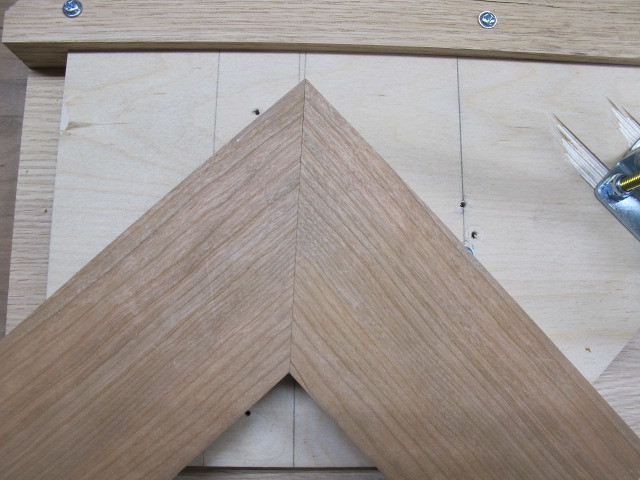Hi everyone.
I've got a problem with my table saw. See this thread if you want to read some history http://www.sawmillcreek.org/showthre...-degree-angles
The thread is about my inability to make perfect 45* cuts on a table saw.
After reading the kind replies, and watching a lot of youtube videos, here's where I am now:
Used several types of squares to ensure that blade was exactly 90* to the table surface.
Did same to ensure that new Incra 1000SE miter gauge was 90* to the blade.
Made a test cut at 90* There's probably a name for this test, but I can't remember hearing one:
1. Take a jointed scrap, the wider the better, length not as big a deal (I used a piece of 1x6 pine, about a foot long).
2. Eyeball the middle of the board (about the 6" mark for me), and use miter to push through a crosscut.
3. Stand the two pieces up on a flat surface. Stand them on the short edge of the board (that is, the 1" side is touching the table, and the 6" side is facing you. There will be no visible gap between the two pieces.
4. Take one of the two pieces and flip it over, so that the 1" side which had been facing the ceiling is now on the table. Push the pieces together.
5. If any daylight shows between the two pieces, your saw (or miter gauge) is out of adjustment. I saw daylight.
This is where I am. I watched a Wood Whisperer video where the distance from a chosen blade tooth to the miter slot was measured at the front and back of the saw. They should be the same. Mine are not. Not off by much, but enough to be noticeable. The blade is skewed slightly to the left, and therein lies the cause of my problems. I guess.
So here's the question, as it relates to my contractor's saw (Delta 34-441 - about 25 years old): Do I need to loosen the table top's bolts and re-align the table (as the Wood Whisperer does), or is there an adjustment on the blade's drive shaft I can make? Saw is belt-driven, and I have not looked closely enough underneath the saw to see if the drive shaft for the blade can be adjusted a hair right or left, or if I will be forced to unbolt the table top and tap it with a hammer to bring the blade parallel with the miter groves.
Any advice, comments or insults would be welcomed!
Mike





 Reply With Quote
Reply With Quote









